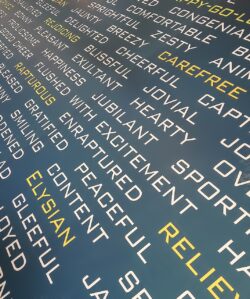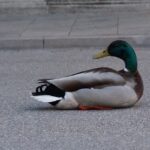
There are not too many issues with adjectives, but here are just a couple to chew on:
Commas between adjectives — or not?
Sometimes you have two (or more) adjectives in front of a noun. Sometimes they both describe the noun. Sometimes the first adjective describes the second adjective.
- It was a cold, snowy night.
- It was a bright blue dress.
In the first example above, both adjectives describe night. And, as you see, there is a comma between the two adjectives. In the second example, bright describes the other adjective, blue.
However, there is not always a comma between two adjectives that describe the same noun:
- Old plaid shirt
- Big black cat
How do you know if you should put a comma between two adjectives that describe the same noun? Try putting an and between the adjectives. If it makes sense with the and, you need a comma. Otherwise, there is no comma.
- cold and snowy night makes sense: cold, snowy night
- old and plaid shirt doesn’t really sound right: old plaid shirt
- big and black cat doesn’t really sound right: big black cat.
But when the first adjective describes the second adjective — and not the noun — there is never a comma:
- bright orange sunset
- red-and-white striped dress
Comparatives and superlatives
Comparatives and superlatives are either adjectives or adverbs. For adjectives we use the -er ending when comparing two things: bigger bicycle. We use -est when comparing three or more things: biggest bicycle in the store. Some adjectives, however, don’t have those -er and -est forms, for example, fun. There is no funner and funnest, although people say those words all the time! For words without -er and -est forms, we use more for comparative and most for superlative: more fun and most fun.
If we are going in the other direction, we use less for comparative and least for superlative: less fun, the least fun of all/ less pretty, the least pretty of all.
Here are the rules: If an adjective has the -er and -est forms, use them. Do not use more and most: prettier (yes), more pretty (no)
Do not use both the -er and more, or the -est and most: more nicer, most nicest (NO)
How do you know if a word has -er and -est forms. Well, you just do. And if you don’t, check with a dictionary.



My ‘simple’ rule was ‘leerowy’: adjectives of 2 or more syllables take ‘more/most’, ecxept when the stress g=falls on the second syllable: ‘politest’, ‘profoundest’, ‘sincerest’, and those ending in ‘-le’, ‘-ly’, ‘-er’, ‘-ow’, ‘-some’, and ‘y’; hence ‘nobler’, ‘,cleanlier’, ‘cleverer’, ‘narrower’, ‘handsomer’, ‘happier’, and so on and so forth, ad infinitum (open group).
Exceptions to the one-syllable adjectives were ‘sly’, ‘shy’, and ‘spry’.
Phew!
Thanks for the tips!!!
Always good to have a lesson from The Grammar Diva.
Now, if we could only find a way to discourage use of FUN as an ADJECTIVE.
Thanks for the comment. And “funner”!!!! YUCK!